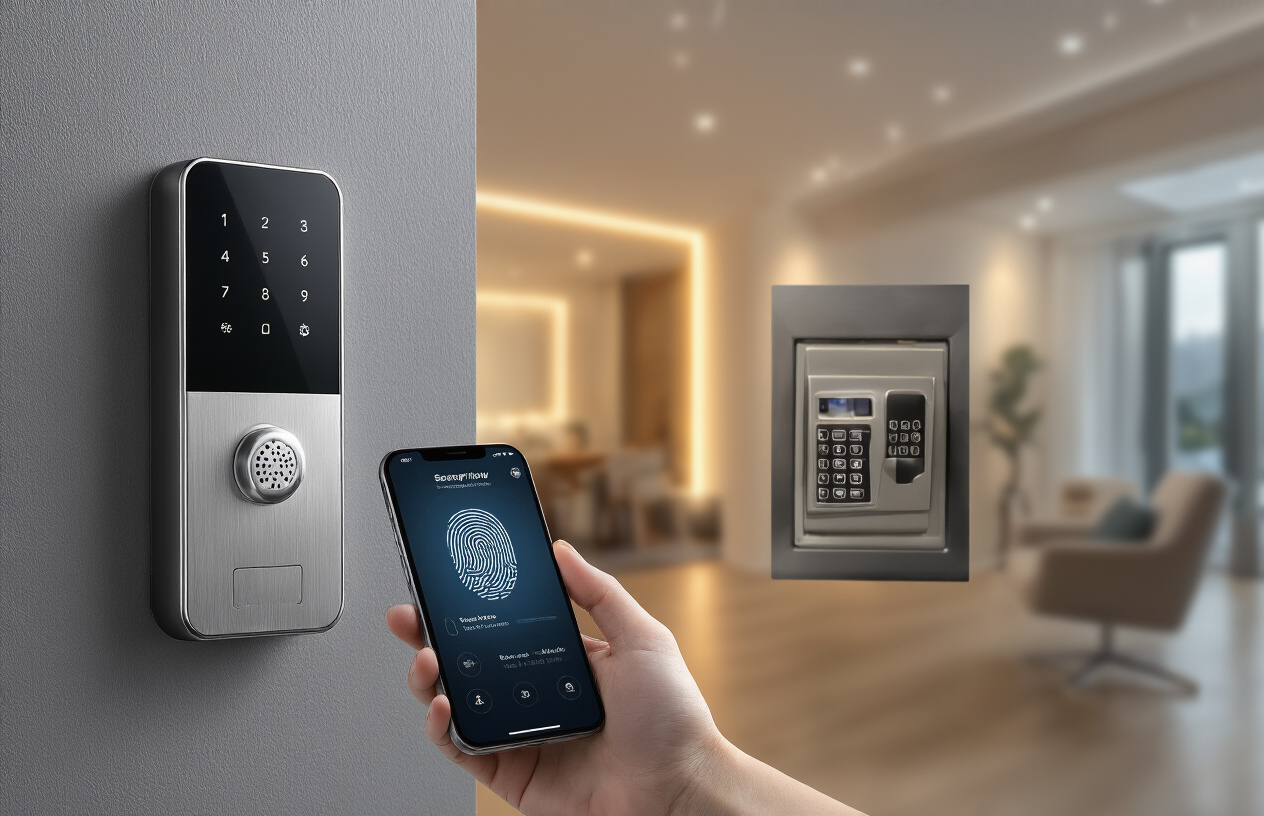Smart Home Lock Safe Ideas: Innovative Ways to Keep Your Valuables Secure
Ever heard that terrifying statistic that a home break-in happens every 26 seconds in America? Yeah, that’s roughly 3,300 homes violated daily. If that doesn’t make you rethink your valuables’ security, I don’t know what will.
Let’s be real—hiding your precious items in sock drawers or under mattresses isn’t cutting it anymore. And those standard safes? They’re practically “rob me” billboards to experienced thieves.
I’ve spent the last decade testing smart home lock safe ideas that blend seamlessly with modern homes while offering bank-vault level protection. Whether you’ve got family heirlooms or emergency cash, these innovative security solutions will give you that peace of mind you’ve been missing.
But the cleverest hiding spot in my collection? That’s something most security experts would never think to recommend…
Smart Lock Fundamentals: The Core of Home Security
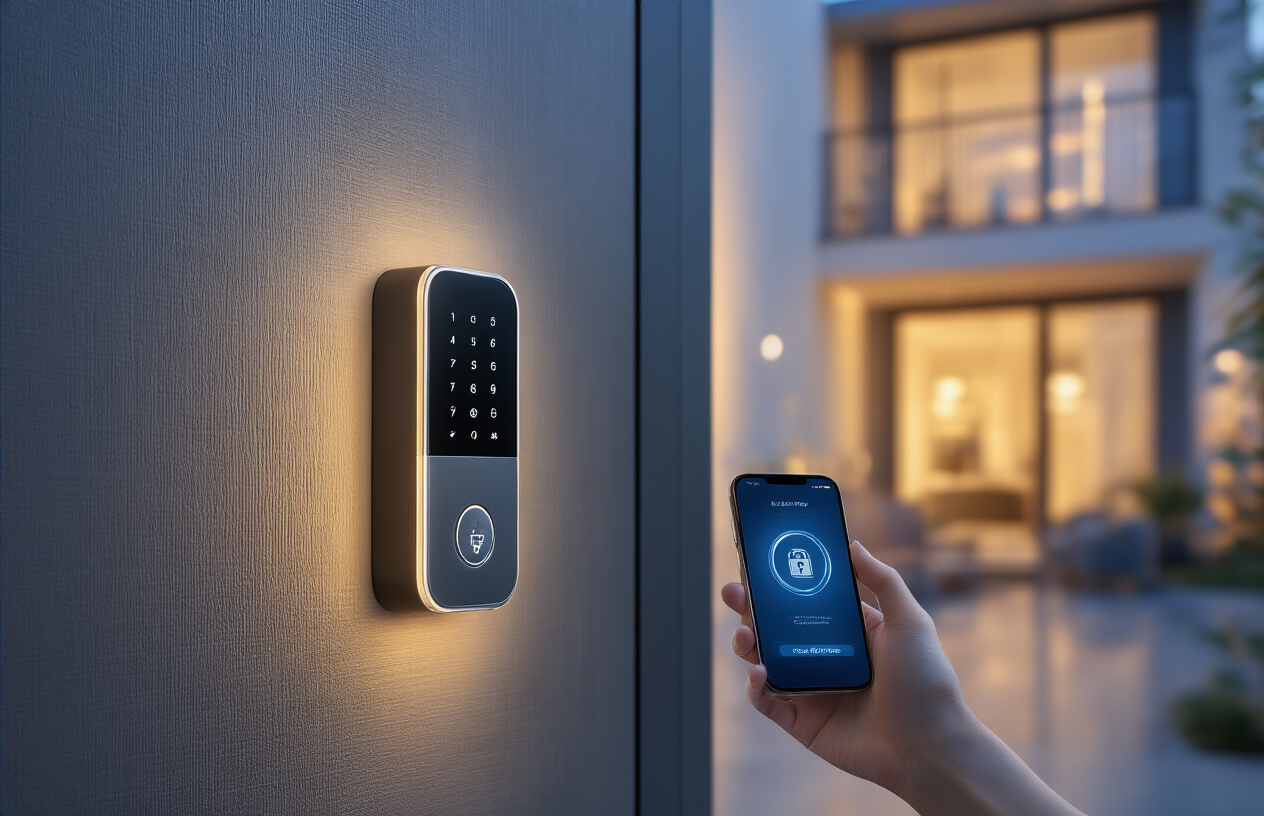
Key Features of Modern Smart Locks
Gone are the days when a deadbolt and key were your only option. Today’s smart locks pack serious tech that makes your grandpa’s padlock look like ancient history.
Most modern smart locks offer:
- Remote access – Control the locking and unlocking of your door from any location using your smartphone
- Activity logs – View who accessed your residence and at what time
- Temporary access codes – Perfect for Airbnb guests or dog walkers
- Auto-lock features – Never worry about forgetting to lock up
- Voice control – Compatible with Alexa, Google Home, and various other assistants
The game-changer? Many new models don’t even require replacing your existing deadbolt. They simply attach to your current lock, saving you installation headaches.
Biometric vs. PIN vs. Key Card Systems
Not all smart locks work the same way. Your options basically boil down to:
| System Type | Pros | Cons |
|---|---|---|
| Biometric | Super convenient, can’t be forgotten, highly secure | More expensive, occasionally glitchy in bad weather |
| PIN Code | Easy to share access, no physical key needed | Codes can be shared or stolen |
| Key Card/Fob | Physical credential, familiar technology | Can be lost or stolen |
Fingerprint readers have gotten ridiculously good lately. They work in seconds and some even adjust to slight changes in your fingerprint over time. Pretty cool, right?
Integration with Home Security Systems
A smart lock by itself is great. A smart lock that talks to your entire security system? That’s next-level protection.
Most premium smart locks connect directly to:
- Security cameras
- Doorbell cameras
- Motion sensors
- Smart lighting
- Home automation hubs
When someone unlocks your door, your lights can automatically turn on. Or if someone tries to force entry, your security cameras can start recording while the system alerts you. The real magic happens in these connections.
Cost-Benefit Analysis for Different Budgets
Smart locks can be expensive, yet it is not necessary to spend excessively.
Budget options ($100-150):
Basic smart features, usually PIN-only, limited connectivity
Mid-range ($150-250):
Multiple access methods, good app experience, works with major smart home platforms
Premium ($250-400):
Biometrics, advanced encryption, high-quality materials, extended warranties
The sweet spot for most homeowners? Mid-range models offer the best balance of features and reliability without making your wallet cry. Remember that installation costs can add another $100-200 if you’re not the DIY type.
Consider maintenance costs too – some models eat batteries for breakfast while others can go 6+ months on a single charge.
Hidden Storage Solutions with Smart Technology
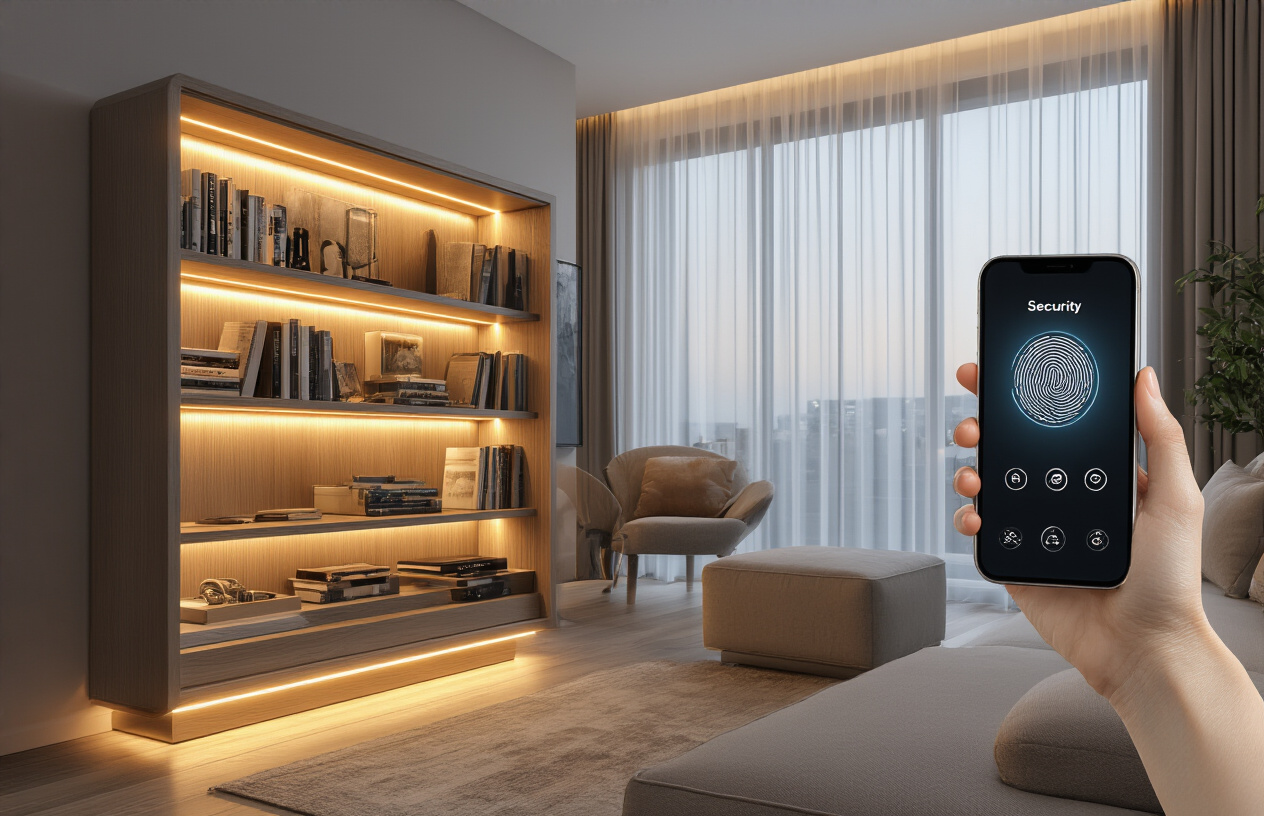
Furniture with Built-in Smart Safes
Gone are the days of ugly, obvious safes. Today’s smart furniture safes blend seamlessly into your home while packing serious security tech.
The nightstand next to your bed? It could have a hidden drawer that only opens with your fingerprint. That stylish end table in your living room? It might house a compartment that unlocks via your smartphone.
Most of these furniture safes connect to your home’s WiFi network, sending alerts if someone’s tampering with them. Some even sync with your existing smart home hub, so you can check status or unlock remotely through Alexa or Google Home.
I recently saw a bookshelf with a section that slides open only after scanning the owner’s face. Pretty James Bond, right?
Wall-Mounted Options with Biometric Access
Wall safes have evolved dramatically. The newest models use your unique biological markers—fingerprints, facial recognition, even retinal scans—to keep unwanted hands out.
Many homeowners are installing these behind paintings or mirrors (classic hiding spots, but effective). The difference? These modern versions can be controlled from your phone and integrate with your security system.
Some standout features include:
- Voice activation protocols
- Anti-tamper alerts sent to your phone
- Temperature and humidity controls for sensitive items
- Battery backup systems that last during power outages
- Silent alarm capabilities that alert authorities
Floor Safes with Advanced Security Features
Floor safes remain among the most secure options, especially now with smart tech upgrades. These babies are literally cemented into your home’s foundation, making them nearly impossible to remove.
The latest models include:
- Multi-factor authentication (something you have + something you know + something you are)
- Vibration sensors that detect drilling attempts
- GPS monitoring in the event that an individual somehow succeeds in obtaining it
- Time-lock features that only allow access during specified hours
- Remote monitoring via encrypted connections
Concrete not your thing? Some companies now offer floor safes designed for installation in wooden floors with reinforced surrounds.
Disguised Everyday Objects with Hidden Compartments
The cleverest storage solutions don’t look like storage at all. Smart technology now hides in ordinary objects around your home:
- Air vents with biometric locks
- Electrical outlet safes controlled by apps
- Wall clocks with rotating faces revealing storage
- Kitchen canisters with false bottoms and PIN codes
- Bathroom mirrors with hidden compartments
These items work because thieves typically rush through homes looking for obvious valuables. They rarely inspect your coffee table’s RFID-protected hidden drawer or that air vent with facial recognition.
Custom Installation Considerations
Before jumping into smart hidden storage, consider:
First, power requirements. Most smart safes need electricity or regular battery replacement. Plan accordingly.
Second, connectivity. Will your safe still function if WiFi goes down? The best systems have offline backup access methods.
Third, location matters. Don’t put fingerprint safes in areas with high humidity that might affect readings. Keep facial recognition units away from direct sunlight.
Finally, remember the installation footprint. That floor safe might need six inches of concrete to properly secure it. That wall unit could require stud reinforcement.
Smart Safe Monitoring and Alerts
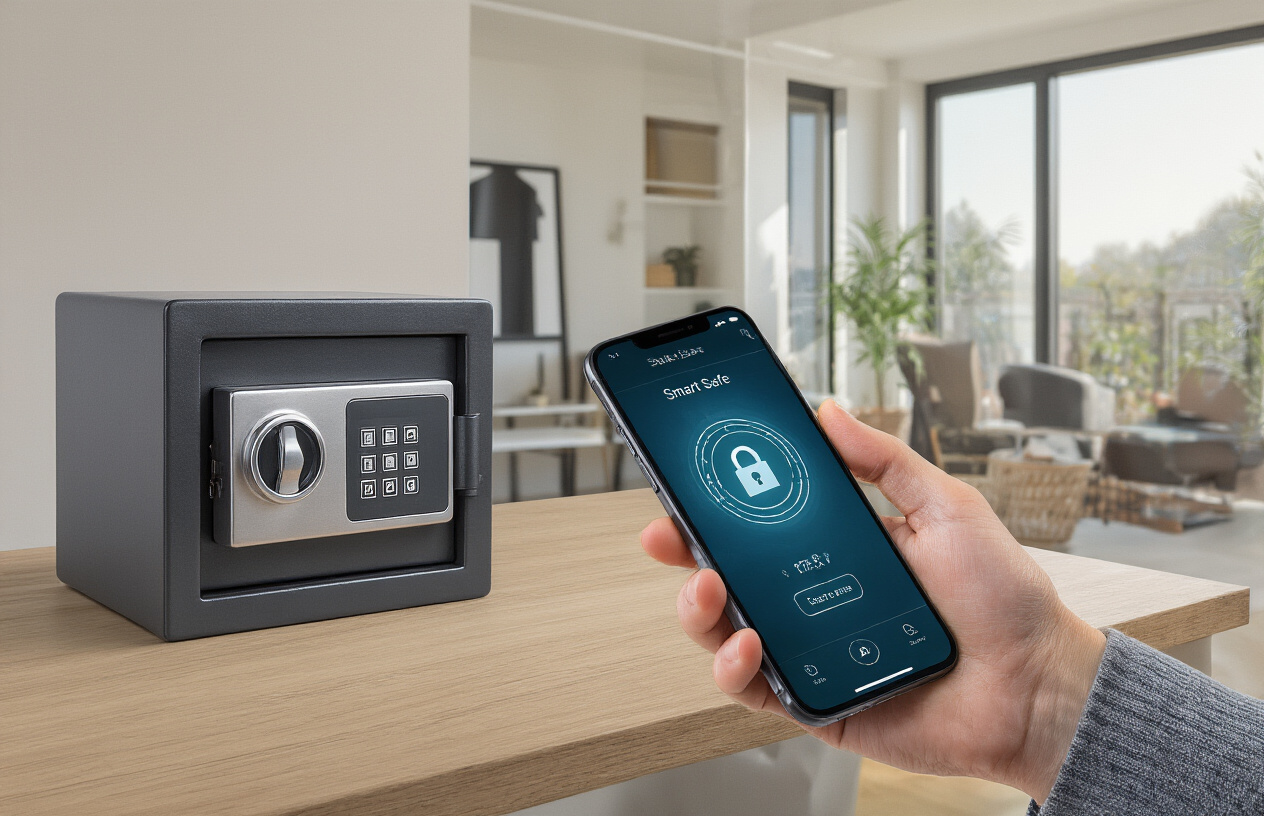
Real-Time Security Notifications
Ever woken up at 3 AM wondering if you locked the safe? Yeah, me too. That’s where real-time notifications come in clutch.
Modern smart safes don’t just sit there looking pretty—they talk to you. Someone enters the wrong code three times? Your phone buzzes. Battery running low? You’ll know before it dies. Unexpected movement during work hours? Instant alert.
These notifications aren’t just annoying pop-ups. They’re your first line of defense when something’s not right. Most systems let you customize exactly what triggers an alert, so you’re not bombarded with updates every time your cat walks by.
The best part? You don’t need to be a tech wizard to set these up. Most work right out of the box, connecting to your home Wi-Fi and sending alerts faster than you can say “hands off my stuff.”
Motion and Tampering Detection Systems
Smart safes have gotten seriously sophisticated with motion detection. We’re talking sensors that can tell the difference between someone bumping into the safe versus actually trying to move it.
The coolest systems use multi-axis accelerometers—the same tech in your smartphone that knows which way is up. They detect not just movement, but the type of movement. A quick jostle gets ignored. Someone trying to carry your safe out the door? Alarm city.
Tampering detection goes beyond just movement. Advanced systems monitor:
- Drill attempts on the exterior
- Electronic interference or jamming signals
- Temperature changes (from torch cutting attempts)
- Vibration patterns from power tools
Remote Monitoring via Smartphone Apps
Your smartphone is basically mission control for your smart safe these days.
The apps have come a long way from the clunky interfaces of a few years ago. Now you can do everything from your phone: check safe status, grant temporary access to family members, review entry logs, even unlock the safe remotely (though I’d be careful with that last one).
Most apps let you review a timeline of all interactions—showing exactly who accessed your safe and when. Some even snap photos or short videos when the safe is opened.
The really smart setup is integrating your safe app with your home security system. That way, when your safe detects a problem, it can trigger your whole home alarm, flick on lights, or even start recording on nearby cameras.
Multi-Layer Security Approaches
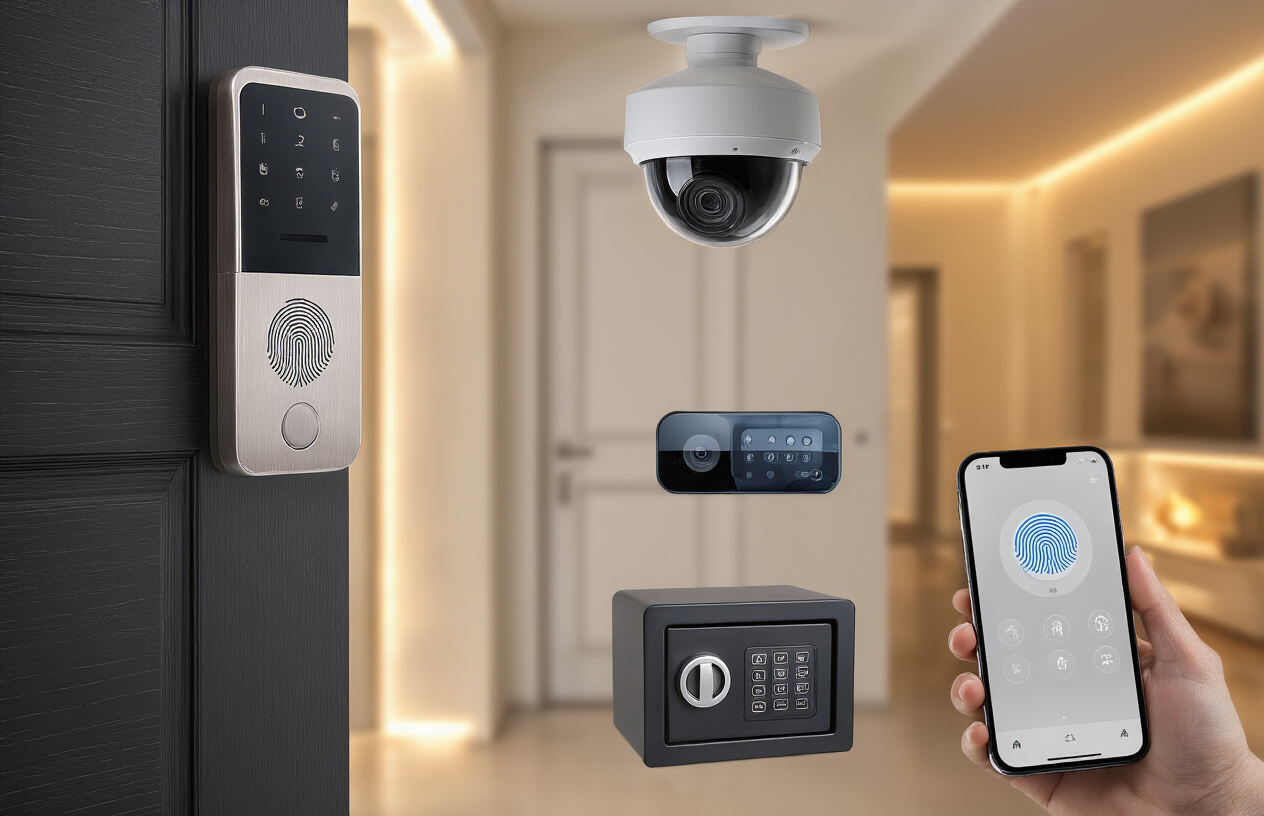
A. Combining Physical and Digital Protection
Gone are the days when a simple deadbolt was enough. Smart homeowners know that layering security is the way to go.
Think about it like this: if a thief bypasses your digital lock, will they also have the tools to break through a physical barrier? Probably not.
Start with a quality smart lock that offers both keypad and app access. Then back it up with traditional mechanisms like deadbolts or security chains. Some of the best setups I’ve seen include:
- A fingerprint-reading smart lock with a backup key cylinder
- Hidden RFID-activated locks behind seemingly normal fixtures
- Reinforced door frames paired with motion-sensing cameras
The true magic occurs when these systems communicate with one another. When your smart lock detects too many failed entry attempts, it can trigger your security cameras to start recording and send alerts to your phone.
B. Decoy Systems to Mislead Potential Thieves
Clever homeowners use psychology against intruders. The truth? Most thieves go for the obvious targets.
Install a conspicuous safe in your office or bedroom – but keep it mostly empty. Maybe throw in some outdated electronics and a few convincing-looking fake jewelry pieces.
Your real valuables? They’re in that hollowed-out book on your shelf, or in that wall outlet safe behind your dresser.
Some homeowners get really creative:
- Fake electrical panels with hidden compartments
- Safes disguised as air vents or wall outlets
- Decoy security cameras (alongside real ones)
- “Hidden” keys that actually open nothing important
C. Creating Security Zones Within Your Home
Not all rooms require the same degree of protection. Smart homeowners create layers of security that get progressively tighter.
Your front door might have standard smart lock protection, but your home office or master bedroom? That’s where you bring out the big guns.
Consider creating these distinct zones:
- Public zones (entryway, living room): Basic monitoring
- Semi-private zones (kitchen, guest rooms): Motion detection
- Private zones (bedrooms, office): Advanced biometric access
You can program your smart home to recognize unusual movement patterns between zones. Someone going straight from your entryway to your office at 2 AM? That should trigger an alert.
D. Backup Access Methods During Power Outages
The fanciest smart lock becomes a paperweight during a power outage if you haven’t planned ahead.
Every smart home security system needs reliable backup options:
- UPS (Uninterruptible Power Supply) dedicated to your security system
- Smart locks with built-in battery backups (check them monthly!)
- Physical keys stored in secure, accessible locations
- Solar-powered charging options for critical security components
One homeowner I know installed a small generator that automatically kicks in to power just their security system during outages. Extreme? Maybe. Effective? Absolutely.
And remember to test your backup systems regularly. The worst time to discover your emergency key doesn’t work is during an actual emergency.
Smart Safes for Specific Valuables
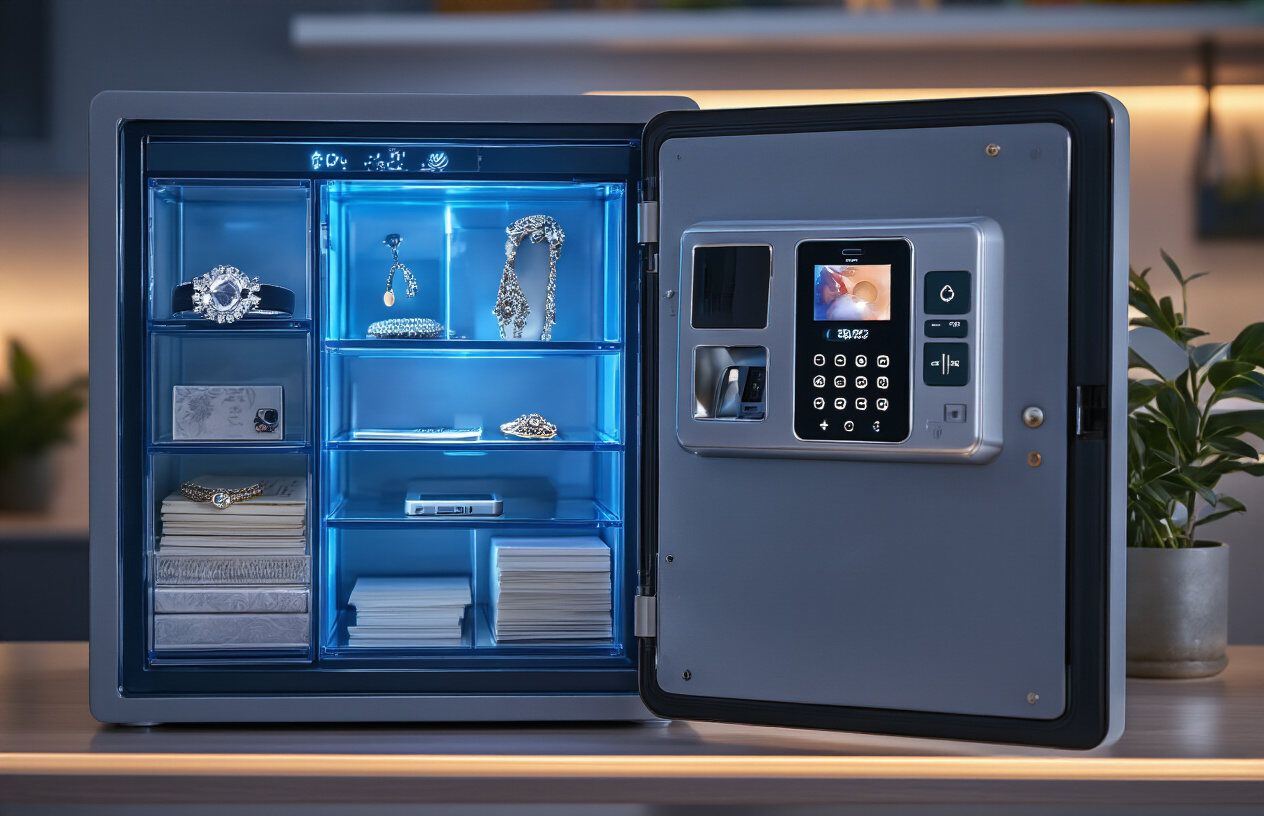
A. Specialized Solutions for Jewelry and Watches
Your grandmother’s pearls, your wedding ring, that Rolex you saved for years to buy—these aren’t just valuables, they’re memories with price tags. Regular safes don’t cut it for jewelry and watches.
Smart jewelry safes now come with specialized features like:
- Velvet-lined compartments that prevent scratches
- Individual watch winders that keep automatic watches running
- Humidity control to prevent tarnishing
- UV protection for gemstones
- Biometric access combined with Bluetooth monitoring
Some models connect to your phone and send alerts if someone’s trying too long to open them. Others have interior cameras so you can check your collection remotely.
B. Document Protection with Climate Control
Paper is surprisingly fragile. Birth certificates, property deeds, wills—they’ll literally crumble under the wrong conditions.
The latest document safes tackle this with:
- Temperature regulation systems (usually 68-72°F)
- Humidity control (ideally 40-50%)
- Fire protection rated for at least 30 minutes at 1,700°F
- Waterproof seals for flood protection
- Anti-fungal treatments to prevent mold
Smart document safes can notify you when internal conditions change, so you can adjust settings through your phone before damage occurs.
C. Gun Safes with Rapid Access Technology
Gun safes balance two competing needs: keeping weapons secure from unauthorized users while allowing quick access in emergencies.
The newest models offer:
- Fingerprint scanning that works in under 1 second
- RFID-enabled wristbands or cards for instant access
- Voice activation with customizable commands
- Smartphone proximity unlocking
- Backup mechanical keys for power outages
Many incorporate tamper alerts, sending notifications if someone makes repeated failed access attempts. The best ones feature interior lighting that activates automatically when opened, critical when you’re fumbling in the dark.
D. Medication Security for Families with Children
Prescription drugs can pose significant risks when misused, particularly by young children.
Smart medication safes provide:
- Timed access to prevent overdosing
- Temperature control for heat-sensitive medications
- Moisture protection for pills and powders
- Companion apps that track inventory and send refill reminders
- Multiple user profiles with different access permissions
Some models include alarms that remind family members when it’s time to take medications, while restricting access to only the prescribed dose. The smartest ones integrate with health apps to track adherence and can even alert caregivers if doses are missed.
Future-Proofing Your Smart Security Investment
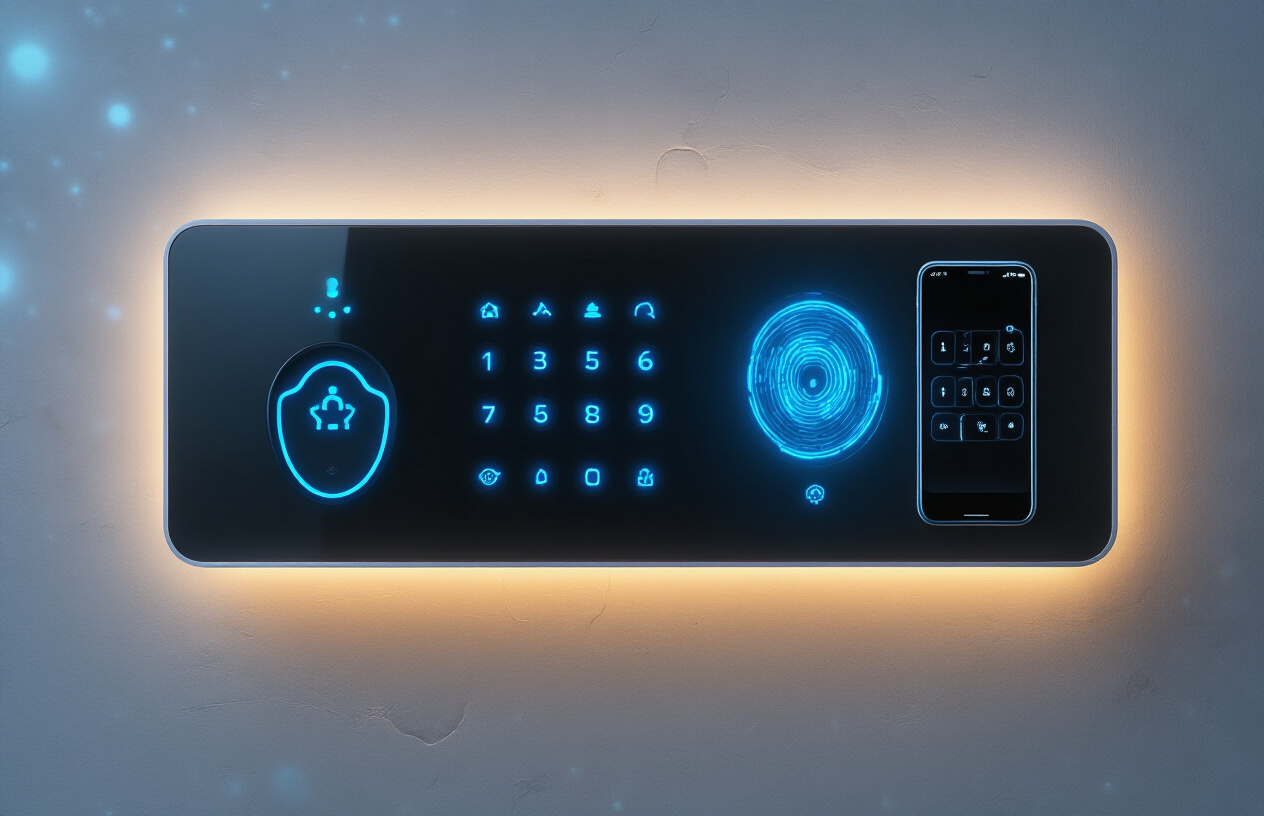
Upgradeable Systems That Grow with Technology
Technology moves fast. Too fast sometimes. What’s cutting-edge today becomes yesterday’s news before you know it. But that doesn’t mean your smart security investment should become obsolete within a year.
Smart companies now design their locks and safes with modular components that can be upgraded individually. Think firmware updates that add features without requiring new hardware. Or replaceable modules that snap in when new tech comes along.
Some brands even offer subscription plans that guarantee you’ll receive the latest hardware upgrades every few years. Worth every penny if you hate the thought of your expensive system becoming outdated.
Cloud Storage for Security Footage and Access Logs
Your security system is only as good as the evidence it captures. Local storage works until someone steals the device containing it (talk about irony).
Cloud storage solves this problem brilliantly. Every entry attempt, successful unlock, or suspicious activity gets logged and stored offsite where thieves can’t touch it. Most premium services offer:
- Real-time backup of all security footage
- Searchable access logs going back months or years
- End-to-end encryption for privacy
- Multiple authentication factors to access your data
Many systems now offer tiered storage plans based on retention needs—keep the last 30 days of regular activity but important events for years.
Compatibility with Emerging Smart Home Standards
The smart home ecosystem is finally growing up. Major players are rallying around standards like Matter and Thread that promise to make everything work together seamlessly.
When shopping for smart security, look for systems advertising compatibility with these emerging standards. This future-proofs your investment by ensuring your locks and safes will communicate with whatever new gadgets come along.
Systems built on open standards also tend to receive updates longer than proprietary ones. The difference could be years of additional usable life from your investment.
Sustainability and Energy Efficiency Considerations
Smart security shouldn’t cost the earth—literally or figuratively. The latest systems are designed with sustainability in mind from the start.
Look for:
- Low-power components that extend battery life to 12+ months
- Solar charging options for outdoor components
- Energy-efficient processors that minimize consumption
- Recyclable materials and responsible manufacturing
Some manufacturers even offer trade-in programs where they’ll refurbish your old equipment when you upgrade. This keeps electronics out of landfills while potentially saving you money on your next purchase.
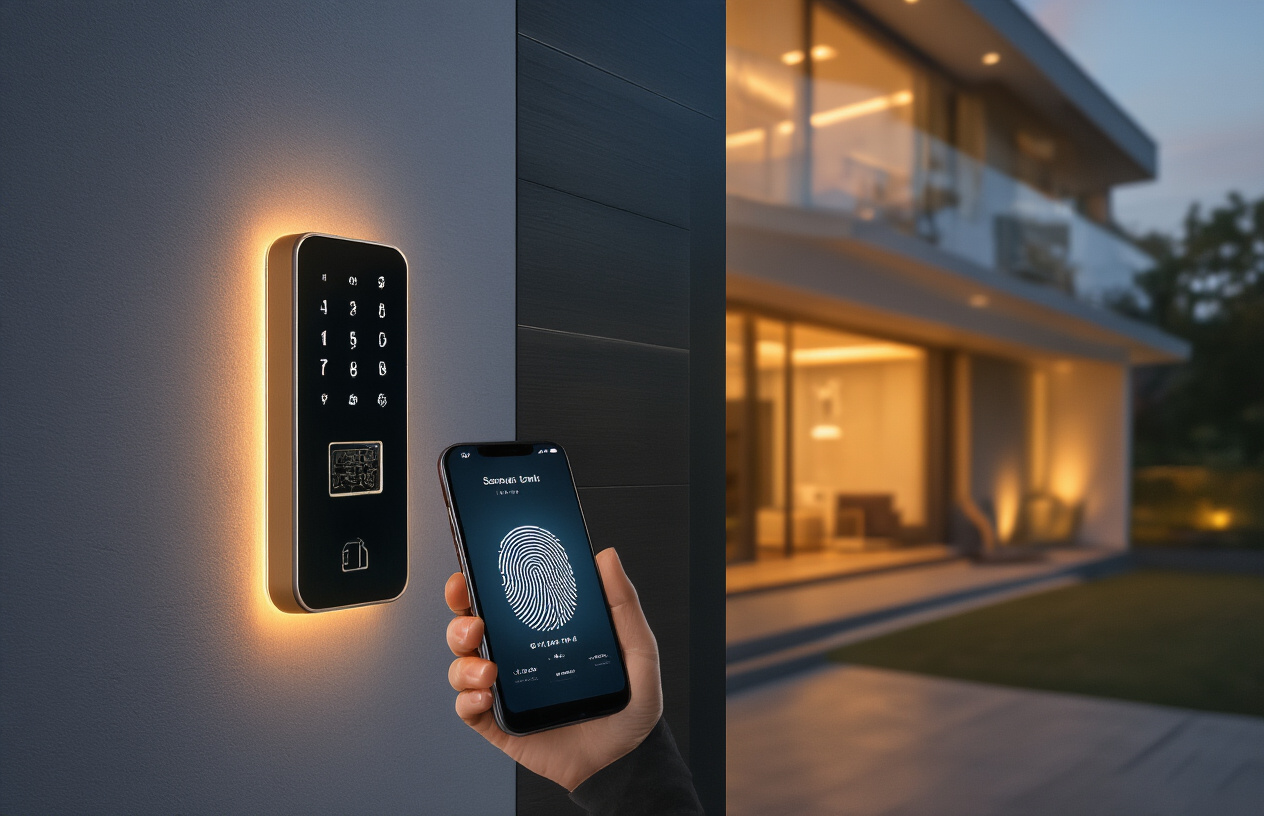
Safeguarding What Matters Most
The evolution of smart home security offers homeowners unprecedented control over their valuable possessions. From sophisticated smart locks serving as your first line of defense to hidden storage solutions that seamlessly blend with your décor, today’s technology provides comprehensive protection for what matters most. Remote monitoring capabilities, multi-layered security approaches, and specialized safes for specific items like jewelry or important documents further enhance your home’s security ecosystem.
As you consider implementing these smart security solutions, remember that investing in quality systems now can save significant heartache later. Choose devices that offer firmware updates, compatibility with future technologies, and robust encryption standards. Your home’s security isn’t just about today’s peace of mind—it’s about creating a flexible, adaptive system that will protect your valuables for years to come.
Smart Home Lock Safe Ideas: Innovative Ways to Keep Your Valuables Secure
